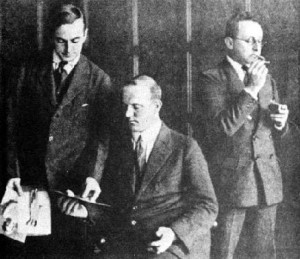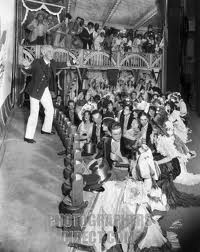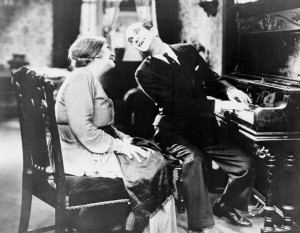In the 1930s Broadway saw some of its greatest composers create some of their finest music. It was a time of transition as Jerome Kern, Irving Berlin, Cole Porter, George and Ira Gershwin, and Richard Rogers and Lorenz Hart scored hit after hit. The 1930s was a time of major transitions on Broadway as the stock market crash, the Great Depression and the talking and singing motion picture. There were major adjustments and changes that would be made on the Broadway scene while at the same time some of The Great White Way’s most important talents would turn out some of their best and most important work.
Hangover from World War I
After World War I, which ended on November 11, 1918, America adopted an isolationist stance. The country was not interested in entering into another war in Europe. This hangover from the war would last until the Japanese bombed Pearl Harbor. That thrust us into World War II in the Pacific, and when Hitler declared war on us in order to support his allies, the Japanese, we were once more in a war in Europe. But from 1918 until the early 1940s we were keeping to ourselves as the rest of the world erupted. That decision to keep to ourselves meant that our artists, including those writing for Broadway, became very interested in American themes, styles and modes of art, and U.S. artists, including composers.
Momentum of the Moment
The momentum of the moment, the new focus on plays and musicals and other art work created by Americans, helped induce a vortex of energy. People were interested in seeing American musicals and there was a great demand for new songs for the many shows on Broadway, in vaudeville theatres and in other venues. In addition, there was a major building movement on Broadway as the number of theatres continued to expand until the Stock Market Crash of 1929. In essence, there was a lot of work for those who created songs, lyrics, and musicals.
Right Place, Right Time
Composers and lyricists such as Berlin, Kern, the Gershwins, Rodgers and Hart and Porter were definitely in the right place at the right time. New York became the center of music publishing and Tin Pan Alley was the place where new songs were played and sold to those publishers. Until the Crash of 1929 and the Great Depression, America was on an upswing economically, New York was growing, and there was a need for and expendable money for entertainment. Anyone could afford to go and see a show on Broadway and for many going to the theatre was a weekly experience.
The Talkies Sing Too
One other thing helped to create an age of greatness for American musical theatre composers in the 1930s. That was the advent of the talking and singing movie. In 1927, the Jazz Singer starring Al Jolson became a major hit. In that movie Jolson spoke and sang and that very fact that musicals could start to be captured in their entirety opened up new doors for composers and lyricists.
1930s on Broadway
Although the 1930s on Broadway would eventually see a decline in terms of the production of shows, the fact is the 1920s had set the stage for some of America’s greatest composers of show tunes to mature and reach their zenith in the ‘30s. In this series, well look at some of the most important talents of that great age.



